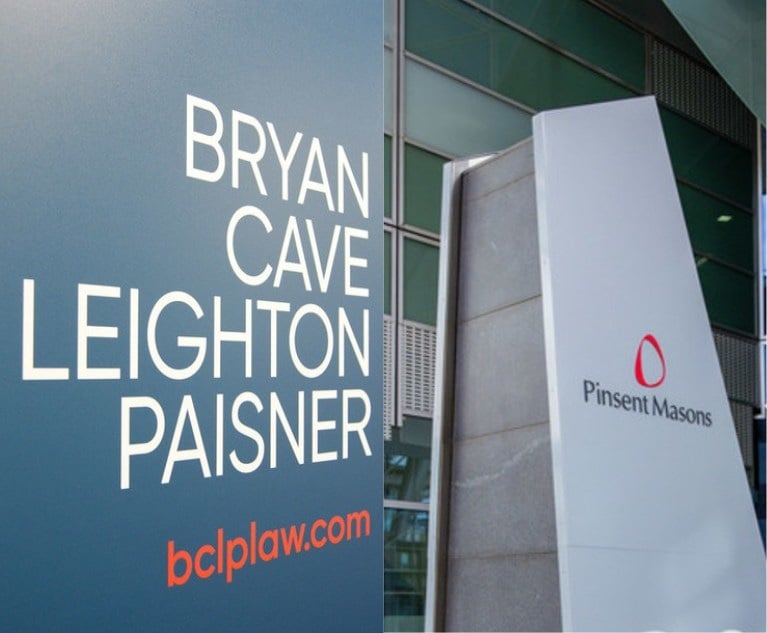Why We Need Online Courts
Richard Susskind argues the case for online courts for a more convenient, cheaper and faster system worldwide.
November 22, 2019 at 12:15 AM
5 minute read
Even in the world's most advanced jurisdictions, most civil disputes cost too much, take too long, the processes are antiquated, and the whole business is unintelligible to non-lawyers. To make matters worse, legal aid has been drastically cut in most countries. In some court systems, there are staggering backlogs – 100 million cases in Brazil, 30 million in India.
Worse, according to the OECD, less than 50% of people on earth live under the protection of the law. Inaccess to justice is now a global pandemic.
This is not a challenge that can be met by a modest injection of funds or by streamlining a few inefficient and outmoded practices. Much more radical change is required. In my new book, Online Courts and the Future of Justice (Oxford University Press), I argue that the transformation can only be achieved through the use of technology. In an increasingly digital society, it now makes sense for much of the work of our public courts to be conducted online.
Initially, I ask whether court is a service or a place. Do we really need to congregate physically to resolve all our differences, especially if they are relatively minor? I argue not and call for the introduction of 'online courts', a state-provided dispute management and resolution service. This is not electronic ADR. It is a reconceptualisation of our public courts as a digital service, overhauling a system that dates directly to reforms made more than 150 years ago. By contrast, online courts were neither possible nor conceivable until the birth of the World Wide Web in the early 1990s.
Two lines of services can be provided through online courts. The first is 'online judging', which involves the determination of cases by human judges but not in traditional courtrooms. Instead, evidence and arguments are submitted through online services. In turn, judges deliver their decisions not in open court but again via online platforms. The proceedings are not conducted in live sittings by video, audio, or real-time chat. There are no hearings, virtual or otherwise.
Online judging is not appropriate for all cases but it is well suited to the disposal of the many low-value disputes (especially civil, family and tribunal cases) that our current courts struggle to handle efficiently. The underlying approach here is not new. Judges already make a range of decisions on the papers alone. Likewise, in large-scale arbitration, many decisions are made without oral hearings. Technology allows us to offer such services publicly, systemically, and at scale.
The second service is in some ways more radical. The idea here is that technology can and should enable courts to deliver more than judicial decisions. These 'extended courts' provide tools, for example, that can help court users understand relevant law and the options available to them. They can guide users in completing court forms, and help them to formulate their arguments and assemble their evidence. They can also offer various forms of non-judicial settlement such as negotiation and early neutral evaluation, not as an alternative to the public court system but as part of it.
Less dramatically, everyday techniques and technologies – apps, smartphones, portals, messaging, video calling, chatbots, live chats, webcasts – can help non-lawyers interact much more easily with the courts. The extension here, and it is a major change, is that the latest systems are being designed primarily for self-represented litigants rather than for lawyers. And these court users can themselves file documents, track cases, engage with court officials and judges, and progress their disputes by using intuitive, jargon-free systems.
As an illustration of extended courts, consider the first phase of the online divorce project in England and Wales. This focused on applications for uncontested divorce, and was launched at the end of April 2018. Between then and mid-September 2018, almost 14,000 online applications were received. Fewer than 1% of these contained errors requiring re-submission. Since then, this figure has dropped to below 0.5%. In the old paper-form system, the court required more than 40% of the applications to be corrected and re-submitted.
Online courts are up and running in other countries too – in Canada, the U.S., China, Singapore and Australia. The levels of user satisfaction are remarkable, overwhelmingly regarded as more accessible, more convenient and less costly than traditional court service. They provide a route to public resolution where today many litigants have none. And they offer a more convenient, less costly, speedier and more understandable service for today's self-represented parties.
What lies ahead? In the current generation of online courts, all authoritative directions or decisions are made by human beings. But we can also envisage a later generation which, in broad terms, draws on artificial intelligence techniques, so that some if not many of the formal directions and decisions will be made by systems rather than flesh-and-blood people.
Unsurprisingly, the prospect of this later generation gives rise to much greater debate than the first. Can we actually be spending valuable time, I am often challenged, on the idea of computers making binding decisions? To be sure, this remains a distant prospect but it is important that we start now to confront some of the ethical and social questions that will inevitably arise as our machines become much more capable.
Richard Susskind is the author of Online Courts and the Future of Justice, published on November 14 by Oxford University Press.
This content has been archived. It is available through our partners, LexisNexis® and Bloomberg Law.
To view this content, please continue to their sites.
Not a Lexis Subscriber?
Subscribe Now
Not a Bloomberg Law Subscriber?
Subscribe Now
NOT FOR REPRINT
© 2025 ALM Global, LLC, All Rights Reserved. Request academic re-use from www.copyright.com. All other uses, submit a request to [email protected]. For more information visit Asset & Logo Licensing.
You Might Like
View All
A&O Shearman, Cleary Gottlieb Act on $700M Dunlop Tire Brand Sale to Japan's Sumitomo


Stewarts and DAC Beachcroft Lead on £2B Leicester City Helicopter Crash Litigation

Israel's Rushed Corporate Tax May Spark Law Firm Mergers, Boost Large Firms Including Gornitzky
4 minute readTrending Stories
- 1US Soccer Monopoly Trial Set to Kick Off in Brooklyn Federal Court
- 2NY AG James Targets Crypto Fraud Which Allegedly Ensnared Victims With Fake Jobs
- 3The 'Motherhood Advantage' in Law: Time to Flip the Script
- 4Fenwick & West Shutters Decade-Old Shanghai Office
- 5Thompson Coe, 2 Lawyers, Hit by $1M+ Legal Mal Suit
Who Got The Work
Michael G. Bongiorno, Andrew Scott Dulberg and Elizabeth E. Driscoll from Wilmer Cutler Pickering Hale and Dorr have stepped in to represent Symbotic Inc., an A.I.-enabled technology platform that focuses on increasing supply chain efficiency, and other defendants in a pending shareholder derivative lawsuit. The case, filed Oct. 2 in Massachusetts District Court by the Brown Law Firm on behalf of Stephen Austen, accuses certain officers and directors of misleading investors in regard to Symbotic's potential for margin growth by failing to disclose that the company was not equipped to timely deploy its systems or manage expenses through project delays. The case, assigned to U.S. District Judge Nathaniel M. Gorton, is 1:24-cv-12522, Austen v. Cohen et al.
Who Got The Work
Edmund Polubinski and Marie Killmond of Davis Polk & Wardwell have entered appearances for data platform software development company MongoDB and other defendants in a pending shareholder derivative lawsuit. The action, filed Oct. 7 in New York Southern District Court by the Brown Law Firm, accuses the company's directors and/or officers of falsely expressing confidence in the company’s restructuring of its sales incentive plan and downplaying the severity of decreases in its upfront commitments. The case is 1:24-cv-07594, Roy v. Ittycheria et al.
Who Got The Work
Amy O. Bruchs and Kurt F. Ellison of Michael Best & Friedrich have entered appearances for Epic Systems Corp. in a pending employment discrimination lawsuit. The suit was filed Sept. 7 in Wisconsin Western District Court by Levine Eisberner LLC and Siri & Glimstad on behalf of a project manager who claims that he was wrongfully terminated after applying for a religious exemption to the defendant's COVID-19 vaccine mandate. The case, assigned to U.S. Magistrate Judge Anita Marie Boor, is 3:24-cv-00630, Secker, Nathan v. Epic Systems Corporation.
Who Got The Work
David X. Sullivan, Thomas J. Finn and Gregory A. Hall from McCarter & English have entered appearances for Sunrun Installation Services in a pending civil rights lawsuit. The complaint was filed Sept. 4 in Connecticut District Court by attorney Robert M. Berke on behalf of former employee George Edward Steins, who was arrested and charged with employing an unregistered home improvement salesperson. The complaint alleges that had Sunrun informed the Connecticut Department of Consumer Protection that the plaintiff's employment had ended in 2017 and that he no longer held Sunrun's home improvement contractor license, he would not have been hit with charges, which were dismissed in May 2024. The case, assigned to U.S. District Judge Jeffrey A. Meyer, is 3:24-cv-01423, Steins v. Sunrun, Inc. et al.
Who Got The Work
Greenberg Traurig shareholder Joshua L. Raskin has entered an appearance for boohoo.com UK Ltd. in a pending patent infringement lawsuit. The suit, filed Sept. 3 in Texas Eastern District Court by Rozier Hardt McDonough on behalf of Alto Dynamics, asserts five patents related to an online shopping platform. The case, assigned to U.S. District Judge Rodney Gilstrap, is 2:24-cv-00719, Alto Dynamics, LLC v. boohoo.com UK Limited.
Featured Firms
Law Offices of Gary Martin Hays & Associates, P.C.
(470) 294-1674
Law Offices of Mark E. Salomone
(857) 444-6468
Smith & Hassler
(713) 739-1250









